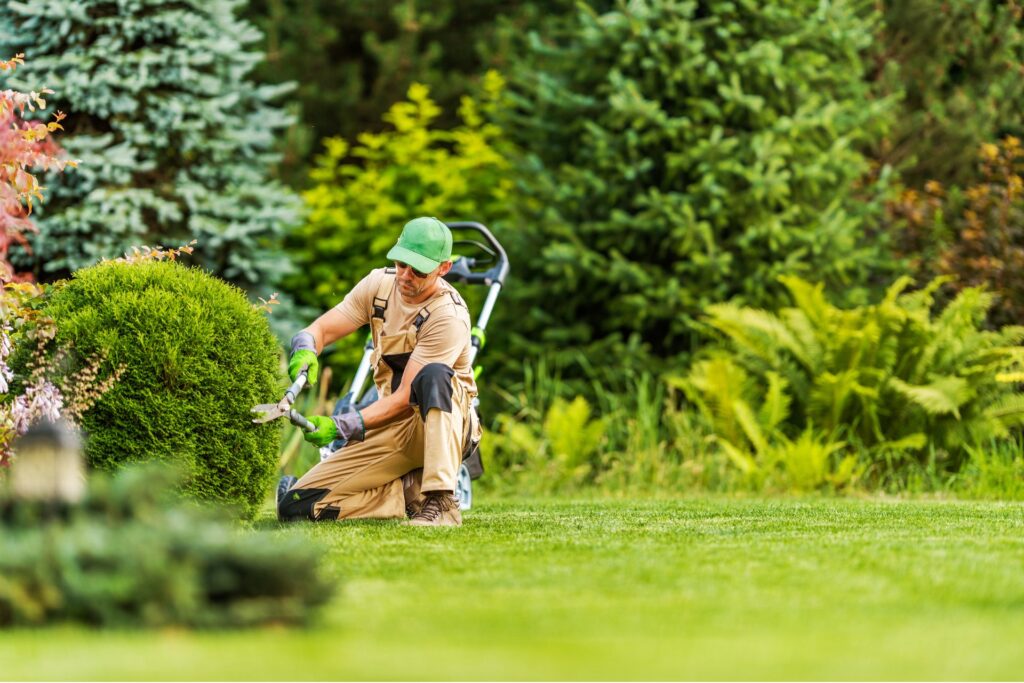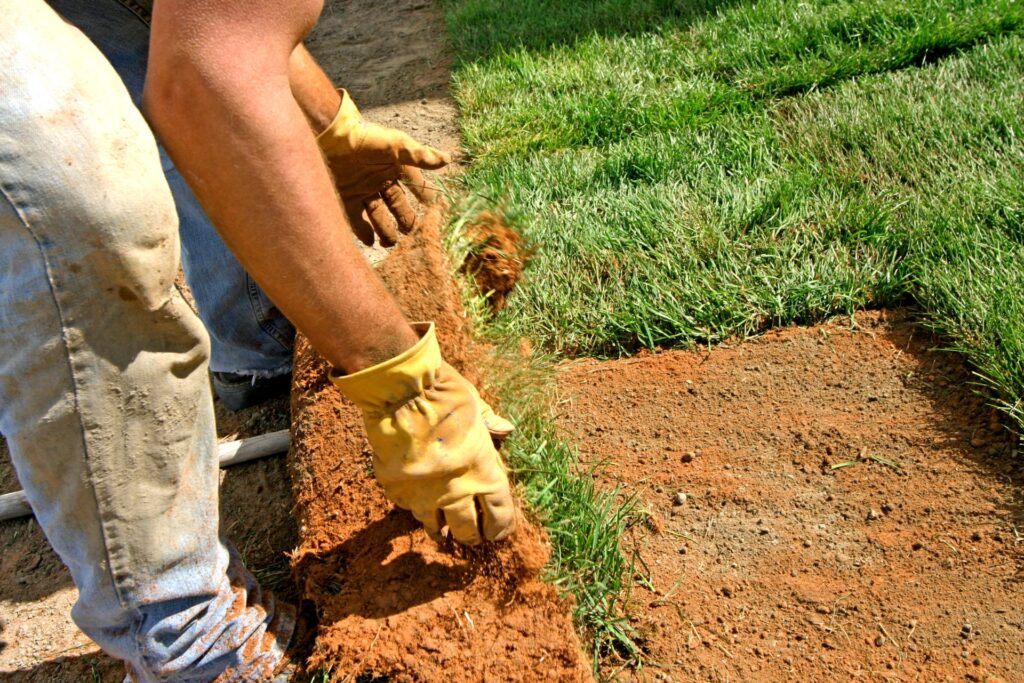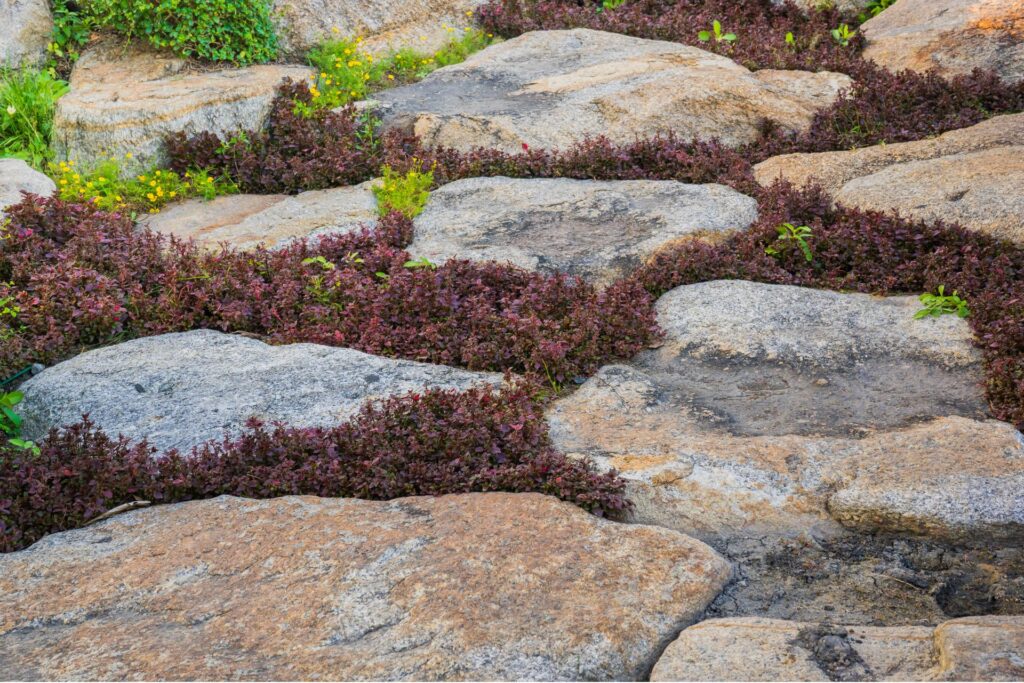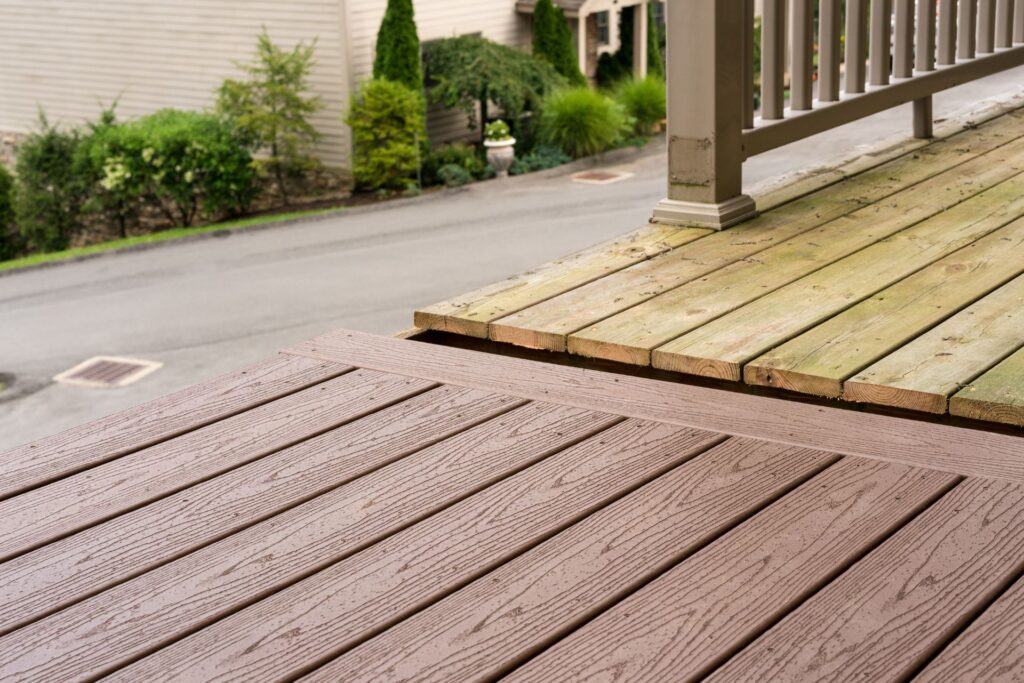Welcome to our comprehensive guide to understanding the costs of landscaping services in New Zealand. Whether you’re looking to enhance the curb appeal of your home, increase your property’s market value, or simply transform your outdoor spaces, it’s crucial to know how different factors such as location, project size, and the materials used can influence overall costs. In this article, we’ll delve into everything from the basic services offered by landscapers to the intricate details of project planning and execution, helping you make informed decisions and effectively budget for your landscaping needs. So, sit back and get ready to equip yourself with all the essential knowledge needed to navigate the landscaping industry in New Zealand.
On average, landscaping services in New Zealand can vary significantly in price based on location, project size, materials, and design complexity. Basic maintenance services typically range from NZD $50 to $100 per hour. For larger, more complex projects such as complete garden redesigns or installations involving extensive hardscaping, costs can start at around $5,000 and can exceed NZD $20,000, depending on specific requirements and luxury additions. This range allows for tailored choices to enhance the aesthetic and functional aspects of outdoor spaces.
- What Are Landscaping Services?
- Factors Influencing The Cost Of Landscaping Services
- Average Costs Of Landscaping Services In NZ
- Choosing Your Landscaping Service
- Saving Money On Landscaping In NZ
- Legal And Regulatory Considerations
- Future Trends In Landscaping Costs
- FAQs: About Cost Of Landscaping Services NZ
- Conclusion
What Are Landscaping Services?
Landscaping services encompass a broad range of activities that aim to enhance the aesthetic appeal and functionality of outdoor spaces. These services are crucial for both residential and commercial properties, ensuring that they not only look appealing but also offer a conducive environment for relaxation and engagement. By understanding what landscaping services involve, property owners can make informed decisions to transform their outdoor areas effectively.
Exploring the Definition of Landscaping Services
At its core, landscaping involves any activity that modifies the visible features of an area of land. This definition broadly includes gardening, which focuses on cultivating plants and flowers to beautify a space, as well as other elements like terrain shape and structure, which might involve altering the land’s topography or adding man-made features such as paths or walls. Landscaping services can be as simple as lawn mowing or as complex as a comprehensive design and overhaul of an outdoor area.
Typical Services Offered in Landscaping
Landscaping services can be categorized into three main types: design, maintenance, and installation.
1. Design: This service focuses on creating a blueprint or plan that outlines the landscaping structure desired by the property owner. Landscape designers work closely with clients to capture their vision, considering both the natural environment and the specific needs of the space.
2. Maintenance: Regular maintenance is essential to keep a landscaped area looking its best. This includes routine tasks such as lawn mowing, trimming hedges, fertilizing, and controlling weeds. Maintenance ensures that plants and other features remain healthy and attractive year-round.
3. Installation: This involves the actual construction and planting outlined in the design phase. Installation services can include setting up irrigation systems, planting trees and shrubs, laying sod, and constructing features like patios, decks, and water features.
Importance of Landscaping for Properties
Landscaping services hold significant importance for both residential and commercial properties. For residential spaces, a well-designed and maintained landscape boosts the home’s curb appeal, increases property value, and provides a tranquil space for relaxation and entertainment. In commercial settings, landscaping plays a crucial role in shaping first impressions. Attractive landscaping can draw in customers and provide a pleasant environment that enhances the experience of visitors and employees alike.
In conclusion, landscaping services play a pivotal role in transforming outdoor spaces into beautiful and functional areas. Whether it’s through design, maintenance, or installation, professional landscaping can significantly enhance the aesthetic and practical aspects of both residential and commercial properties, making them more enjoyable and valuable.

Factors Influencing The Cost Of Landscaping Services
When considering landscaping services in New Zealand, it’s essential to understand the various elements that contribute to the overall costs. These factors can significantly influence the final price you pay, whether you’re revamping your backyard or embarking on a more substantial commercial project. Here, we explore five crucial aspects: geographical location, size and scope of the project, materials used, labor costs, and design complexity.
1. Geographical Location
The location of your property within New Zealand plays a pivotal role in landscaping costs. Urban areas, particularly in major cities like Auckland, Wellington, and Christchurch, often see higher pricing due to increased demand for services and higher operational costs for businesses. Conversely, rural areas might benefit from lower costs, although the availability of services can be more limited. Additionally, the difference between the North and South Islands also affects pricing, with the South Island sometimes being more expensive due to transport costs for materials and fewer service providers.
2. Size and Scope of Project
The overall size and scope of your landscaping project directly impact the cost. Simple designs that cover a small area are naturally less expensive than extensive overhauls. Complexity also plays a part; projects that require significant earthmoving, soil treatment, and diverse planting schemes will need more resources and time, thereby increasing the cost.
3. Materials Used
The choice of materials is another significant cost factor in landscaping. Opting for native plants can be more cost-effective compared to imported varieties, which may require special conditions to thrive. Additionally, the use of hardscaping elements like stone pathways, wooden decks, and water features can drive up costs due to both the materials themselves and the labor required to install them.
4. Labour Costs
Labor charges in New Zealand can vary widely and are influenced by several factors, including the skill level of the workforce, the duration of the project, and regional wage differences. Specialized tasks, such as the installation of electrical features or custom stonework, typically require skilled tradespeople and thus command higher fees.
5. Design Complexity
Finally, the complexity of the design can significantly alter your budget. Custom designs that include unique features like bespoke water elements, intricate paving patterns, or specialized plantings are more labor-intensive and require more planning and design time. These factors contribute to higher costs compared to more standard or off-the-plan designs.
In conclusion, understanding these five factors—geographical location, project size and scope, materials used, labor costs, and design complexity—can help you better anticipate the costs associated with landscaping in New Zealand. By considering each of these elements, you can make informed decisions that align with your budget and landscaping goals. Whether you’re planning a simple garden refresh or a comprehensive outdoor overhaul, being aware of what affects costs can guide you through the process more smoothly and avoid unexpected expenses.

Average Costs Of Landscaping Services In NZ
When considering landscaping services in New Zealand, homeowners and property managers are often curious about the potential financial investment required. The cost of landscaping can vary widely depending on several factors, including the type of service, the size of the property, the complexity of the project, and the specific materials used. Below, we delve into the average cost ranges for various landscaping services—from basic maintenance to full design and hardscaping. Additionally, we provide illustrative mini-case studies to help contextualize these expenses.
Basic Maintenance Services
Basic maintenance is the foundation of landscape upkeep, encompassing lawn mowing, hedge trimming, weeding, and general garden care. For a standard suburban property, the cost typically ranges from NZ$50 to NZ$150 per visit. This price variation is influenced by the garden size, frequency of service, and specific tasks performed.
Mini Case Study: A homeowner in Auckland with a 500-square-meter garden might spend around NZ$100 per visit for weekly maintenance, totaling an approximate annual cost of NZ$5,200.
Full Landscape Design Services
Full landscape design services transform your outdoor space with a comprehensive plan that includes plant selection, layout, and features like pathways and water elements. This service is ideal for creating a cohesive and aesthetically pleasing environment. Costs can range from NZ$2,000 to over NZ$15,000, depending on the scale and intricacy of the design.
Mini Case Study: In Wellington, a couple opted for a full redesign of their 800-square-meter backyard. The project included new flower beds, a vegetable garden, and a small pond, costing them NZ$12,000.
Hardscaping Services
Hardscaping refers to the installation of non-living elements such as patios, retaining walls, and decks. These projects often require more significant investment due to the materials and labor involved. Prices can vary from NZ$5,000 to NZ$30,000. The cost depends on the materials (like natural stone vs. concrete), the project’s complexity, and the area’s size.
Mini Case Study: A property owner in Christchurch added a 20 square meter stone patio and a wooden deck around their property, with total costs coming to approximately NZ$25,000.
Landscaping services in New Zealand offer a wide range of options tailored to different needs and budgets. Whether you’re looking for regular garden upkeep or a full-scale transformation of your outdoor space, understanding the cost implications is crucial. By considering the types of services and their associated costs as outlined above, you can better plan your landscaping project to enhance your property’s value and enjoyment.

Choosing Your Landscaping Service
When it comes to transforming your outdoor spaces, choosing the right landscaping service is crucial. This guide will help you navigate through the process, ensuring you make informed decisions that lead to satisfying results.
Assessing Your Needs
Before reaching out to landscaping professionals, it’s essential to clearly define what you want to achieve. Whether you’re looking to add a few flower beds, overhaul your entire backyard, or simply maintain your existing landscape, understanding your needs will help you choose the service that best fits your project. Consider factors such as the size of your area, the type of plants that thrive in your climate, and your maintenance expectations. This preliminary assessment will not only help clarify your vision but also communicate more effectively with potential service providers.
Finding a Reputable Service Provider
Once you have a clear idea of your landscaping needs, the next step is to find a trustworthy professional to bring your vision to life. Start by seeking recommendations from friends, family, or neighbors who have recently undertaken similar projects. Online reviews and ratings on platforms like Yelp, Google, and Angie’s List can also provide insight into the reliability and quality of local landscaping companies.
It’s important to check for certifications and licenses, which indicate a landscaper’s commitment to professionalism and mastery of their craft. A reputable landscaper should be willing to share their portfolio of past projects, giving you a glimpse of their style and expertise. This helps you gauge whether their capabilities align with your design preferences and project requirements.
Getting Quotes and Comparisons
After narrowing down your list of potential landscapers, the next step is to obtain quotes. It’s advisable to get estimates from at least three different providers to compare prices and services. However, don’t let cost be the sole deciding factor. Consider the value of the services offered, including warranties and follow-up maintenance.
When reviewing quotes, pay close attention to the details. Ensure that the quotes include the same scope of work, materials, and timelines. This will help you make an apples-to-apples comparison between different providers. Be wary of quotes that are significantly lower than others, as this could be a sign of cutting corners or a lack of experience.
Choosing the right landscaping service is a significant decision that affects the longevity and aesthetics of your property. By thoroughly assessing your needs, seeking out reputable professionals, and carefully comparing quotes, you can ensure that you select a landscaping service that meets your expectations and enhances the beauty of your home.

Saving Money On Landscaping In NZ
Landscaping can transform your property, boosting both its aesthetic appeal and value. However, the costs associated with such projects can be substantial. Fortunately, with the right strategies, you can beautify your outdoor spaces in New Zealand without breaking the bank. This guide explores practical ways to save money on landscaping, including when to DIY versus hiring professionals, essential budgeting tips, and the best times of the year to undertake specific landscaping tasks.
DIY vs. Professional Services: When to Choose Each
When to DIY: If you have a green thumb, consider taking on some landscaping tasks yourself. DIY landscaping not only reduces costs but also provides a sense of accomplishment. Simple projects like planting shrubs, setting up a vegetable garden, or installing a new flower bed are excellent candidates for DIY and require minimal specialized skills.
When to Hire Professionals: For more complex projects, such as installing irrigation systems, significant earthworks, or designing a comprehensive landscape plan, hiring professionals is advisable. Experts bring a level of precision and efficiency that not only ensures a high-quality outcome but can also prevent costly mistakes and future maintenance issues.
Budgeting Tips: How to Plan Financially for a Landscaping Project
Effective budgeting is crucial to avoid overspending on your landscaping projects. Start by defining your project’s scope and researching the average costs of the materials and services you will need. Here are a few tips to help you manage your landscaping budget:
1. Get Multiple Quotes: Always seek several quotes from different service providers to ensure competitive pricing.
2. Phase Your Project: If budget constraints are an issue, consider phasing the project over several months or even years. This approach allows you to spread out the expenses and adjust plans as your budget allows.
3. Reuse and Recycle: Look for opportunities to reuse materials from other parts of your garden or recycle materials from community resources, which can significantly reduce costs.
Seasonal Considerations: Optimal Times of the Year for Certain Landscaping Jobs to Save Costs
The timing of your landscaping activities can have a significant impact on costs due to seasonal variations in the availability of labor and materials. Here are some seasonal tips to consider:
Spring: Ideal for planting most new plants, as the weather is mild and plants have time to establish themselves before the harsh summer or winter.
Autumn: Great for planting perennials, trees, and shrubs, as the cooler temperatures help new plants establish without the stress of mid-summer heat. Additionally, many nurseries offer end-of-season discounts on plants and landscaping materials.
Winter: Although it’s off-peak, it’s a good time to plan your projects and purchase materials, as many companies offer lower rates to maintain business flow.
By strategically choosing when to perform certain landscaping tasks, you can take advantage of off-peak prices and better manage overall project costs.
Landscaping in New Zealand doesn’t have to be an expensive endeavor. With a mix of DIY efforts where practical, careful budgeting, and timely execution of projects, you can achieve a beautiful landscape that fits your financial comfort zone. Whether you’re revamping a small garden area or overhauling your entire backyard, these strategies will help you maximize your landscaping investment while minimizing expenses.

Legal And Regulatory Considerations
When embarking on landscaping projects in New Zealand, it’s crucial to navigate the maze of legal and regulatory requirements to ensure your project proceeds without any legal hitches. This guide will provide you with a detailed overview of the necessary permits and regulations, as well as highlight the importance of compliance with local laws to help you avoid potential penalties.
Permits and Regulations Affecting Landscaping Projects
Landscaping in New Zealand can involve various activities, from simple garden makeovers to extensive structural changes and land modifications. Depending on the scale and nature of your project, several permits may be required:
1. Resource Consents: For significant earthworks, water usage, or activities that impact the natural environment, a Resource Consent under the Resource Management Act 1991 may be necessary. This consent helps ensure that your project adheres to sustainability principles and minimizes environmental impact.
2. Building Consents: If your landscaping project includes structural elements like retaining walls, decks, or large pergolas, you might need a Building Consent from your local council. This ensures that all structures are safe, stable, and built according to the national Building Code.
3. Heritage and Conservation Considerations: If your property is located in a heritage area or includes a listed heritage feature, additional consents may be required to protect these cultural and historical aspects. Compliance with the Heritage New Zealand Pouhere Taonga Act is essential.
4. Local Council Regulations: Each local council in New Zealand may have specific landscaping regulations, such as fence heights, boundary treatments, and vegetation controls. It’s advisable to check with your local council for any specific bylaws that might affect your project.
Importance of Compliance with Local Laws
Complying with local laws is not just a legal necessity but also a practical consideration to avoid costly penalties and project delays. Here’s why compliance is crucial:
Avoiding Penalties: Non-compliance with legal requirements can lead to fines and enforcement actions. Ensuring that all permits and consents are in place before starting your project can save you from legal troubles and financial losses.
Ensuring Safety: Compliance with building codes and regulations guarantees that all constructed structures are safe for use. This is particularly important in protecting your family, visitors, and the broader community.
Enhancing Property Value: A legally compliant landscaping project can significantly enhance the aesthetic appeal and value of your property. It assures potential buyers that all modifications are up to standard, potentially making your property more attractive in the real estate market.
Community Relations: Following local laws helps maintain good relationships with neighbors and the community. It shows respect for communal norms and legal standards, contributing to a harmonious living environment.
Understanding and adhering to the legal and regulatory framework in New Zealand is essential for any landscaping project. It ensures that your enhancements are sustainable and safe, and add value to your property while maintaining good standing within your community. Before you dig into your next project, make sure to consult with local council authorities, seek necessary permits, and fully understand the regulations that apply to your specific situation. Compliance is key to achieving a successful landscaping outcome.

Future Trends In Landscaping Costs
As we venture further into the 21st century, the landscaping industry faces a dynamic shift, influenced heavily by both economic factors and growing environmental concerns. Homeowners and businesses alike are increasingly conscious of the aesthetics of their outdoor spaces, but how will the costs associated with landscaping evolve? Let’s delve into the future trends in landscaping costs and the impact of sustainability on landscaping practices.
Predictions on Changes in Landscaping Costs
Landscaping costs are subject to a variety of factors including labor charges, the price of plants and materials, and overhead costs related to equipment and technology. In the future, these costs are expected to be influenced by several key factors:
1. Technology Integration: The rise of technology in landscaping, such as automated irrigation systems and robotic mowers, could initially increase costs due to the investment in high-tech equipment. However, over time, these technologies are likely to become more affordable and could reduce labor costs and increase efficiency.
2. Labor Market Fluctuations: The cost of labor in landscaping is likely to increase, driven by higher living standards and a potential shortage of skilled labor. This could elevate overall costs for landscaping services unless offset by technological advancements.
3. Material Costs: The price of raw materials, such as plants, soil, and mulch, may rise due to factors like inflation and changes in supply chains. However, local sourcing and the use of native plants can help mitigate these increases.
4. Regulatory Impact: Government policies related to environmental conservation and labor laws could also play a significant role in shaping landscaping costs. Stricter regulations might lead to higher compliance costs for landscaping businesses.
Impact of Environmental Concerns on Landscaping Practices and Costs
Environmental sustainability is becoming a cornerstone of all industries, including landscaping. Here’s how environmental concerns are poised to impact landscaping practices and costs:
1. Sustainable Practices: There is a growing trend towards sustainable landscaping that conserves water and uses fewer chemicals. Practices such as xeriscaping, the use of drought-resistant plants, and organic gardening are becoming popular. These practices often require more initial investment but can reduce water and maintenance costs in the long run.
2. Green Materials: The demand for organic, eco-friendly materials is on the rise. While these can be more expensive than conventional options, they offer long-term benefits such as improved soil health and reduced environmental impact, which can be appealing to environmentally conscious consumers.
3. Regulatory Encouragements: Governments and local authorities might offer incentives for sustainable landscaping practices, such as tax breaks or subsidies. This can help offset the higher initial costs associated with green landscaping solutions.
4. Consumer Preferences: As public awareness of environmental issues grows, consumer preferences are shifting towards more sustainable and eco-friendly landscaping solutions. Landscapers who adapt to these preferences can potentially command higher prices for their services, reflecting the increased value attributed to sustainability.
In conclusion, the future of landscaping costs is influenced by a complex interplay of technological advancements, labor market trends, material costs, and regulatory changes. Moreover, the industry’s shift towards sustainability is not just a response to environmental concerns but also an opportunity to innovate and redefine practices. For consumers and businesses looking to invest in landscaping, understanding these trends will be crucial in making informed decisions that balance cost with environmental responsibility.

FAQs: About Cost Of Landscaping Services NZ
Conclusion
In conclusion, after exploring the essential aspects of successful landscaping, it’s clear that careful consideration of these key points can greatly enhance your project’s outcome. From selecting the right plants to understanding the importance of soil quality and sunlight, each element plays a pivotal role in creating a vibrant and sustainable outdoor space. We encourage you to apply this newfound knowledge thoughtfully as you plan your next landscaping endeavor. Should you feel the need for expert advice or help to bring your vision to life, don’t hesitate to reach out to a landscaping professional. Armed with this understanding, you’re well-equipped to make informed decisions that will result in a beautifully landscaped area that you can enjoy for years to come.
About the Author:
Mike Veail is a recognized digital marketing expert with over 6 years of experience in helping tradespeople and small businesses thrive online. A former quantity surveyor, Mike combines deep industry knowledge with hands-on expertise in SEO and Google Ads. His marketing strategies are tailored to the specific needs of the trades sector, helping businesses increase visibility and generate more leads through proven, ethical methods.
Mike has successfully partnered with numerous companies, establishing a track record of delivering measurable results. His work has been featured across various platforms that showcase his expertise in lead generation and online marketing for the trades sector.
Learn more about Mike's experience and services at https://theleadguy.online or follow him on social media:







